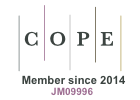Abstract
The second regional list of threatened lichens and allied fungi is presented. The list is a result of investigation studies in North-Eastern Poland. In physicogeographic regionalization this area comprises 4 macroregions: Staropruska Lowland, Litewskie (Lithuanian) Lakeland, Mazurian Lakeland and South Podlasie Lowland. It is characterized by the presence of large forest complexes, including the Białowieża Old-growth Forest, the Knyszyńska Old-growth Forest, the Augustowska Old-growth Forest, the Romincka Old-growth Forest, the Borecka Old-growth Forest and the Piska Old-growth Forest. The status of threat to the lichen and allied fungi species listed has been determined according to the IUCN Red List Categories in version 3.1 (2001). The data obtained were compared with historical ones. Changes of the species main frequency were used as an additional indicator of their threat status. The Red List includes 310 taxa of lichens, lichenicolous and saprobic fungi, which constitute 52% of the NE Poland total lichen biota and 19.4% of Polish biota. The status of threatened biota has the following categories: Regionally Extinct (RE) -49 taxa, Critically Endangered (CR) - 58, Endangered (EN) - 41, Vulnerable (VU) - 39, Near Threatened (NT) - 24, Least Concern (LC) - 19 and Data Deficient (DD) - 80. Epiphytes constitute 84% of extinct and critically endangered species.
Keywords
lichens; lichenicolous and saprobic fungi; red list; IUCN Red List Categories in version 3.1; NE Poland






